
How to Use Teensy 4.0: Examples, Pinouts, and Specs
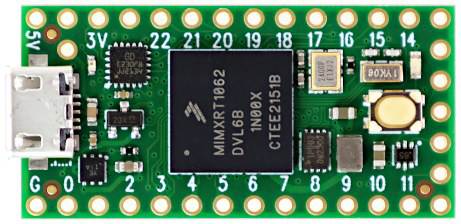
 Design with Teensy 4.0 in Cirkit Designer
Design with Teensy 4.0 in Cirkit DesignerIntroduction
The Teensy 4.0 is a powerful microcontroller board built around the NXP i.MX RT1062 chip, featuring a 600 MHz ARM Cortex-M7 processor. It is designed for high-performance applications, offering 1 MB of RAM and 2 MB of flash memory. Despite its compact size, the Teensy 4.0 delivers exceptional processing power, making it ideal for demanding projects such as real-time audio processing, robotics, machine learning, and advanced control systems.
Explore Projects Built with Teensy 4.0
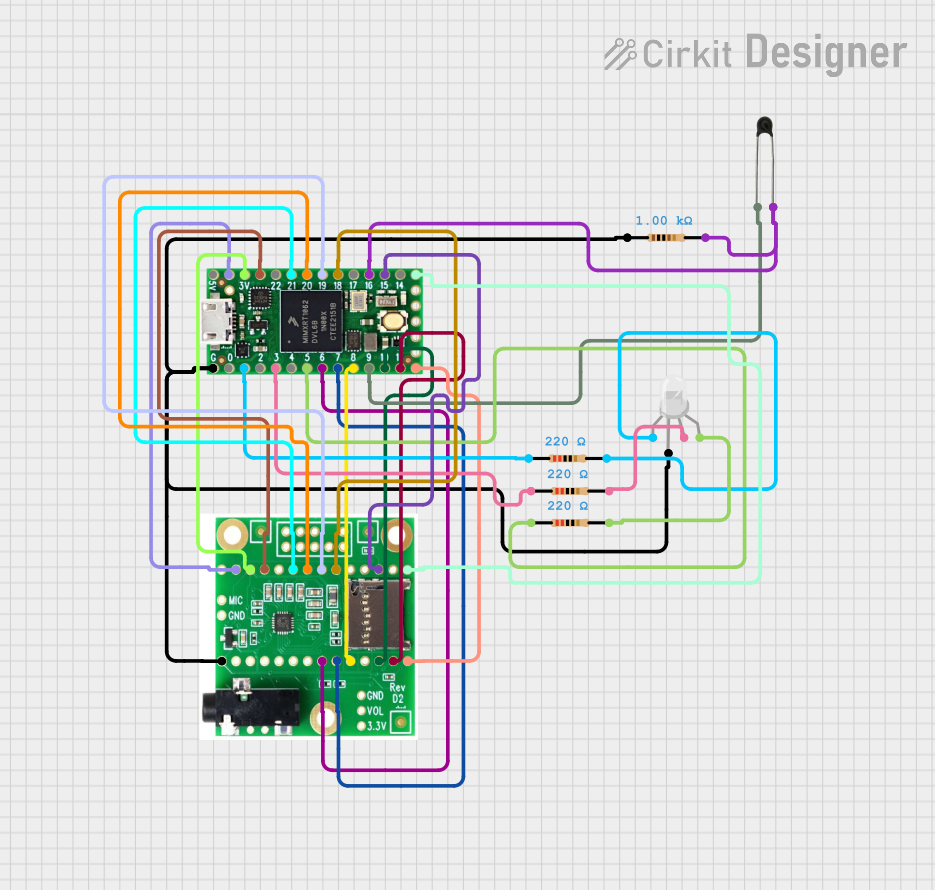
 Open Project in Cirkit Designer
Open Project in Cirkit Designer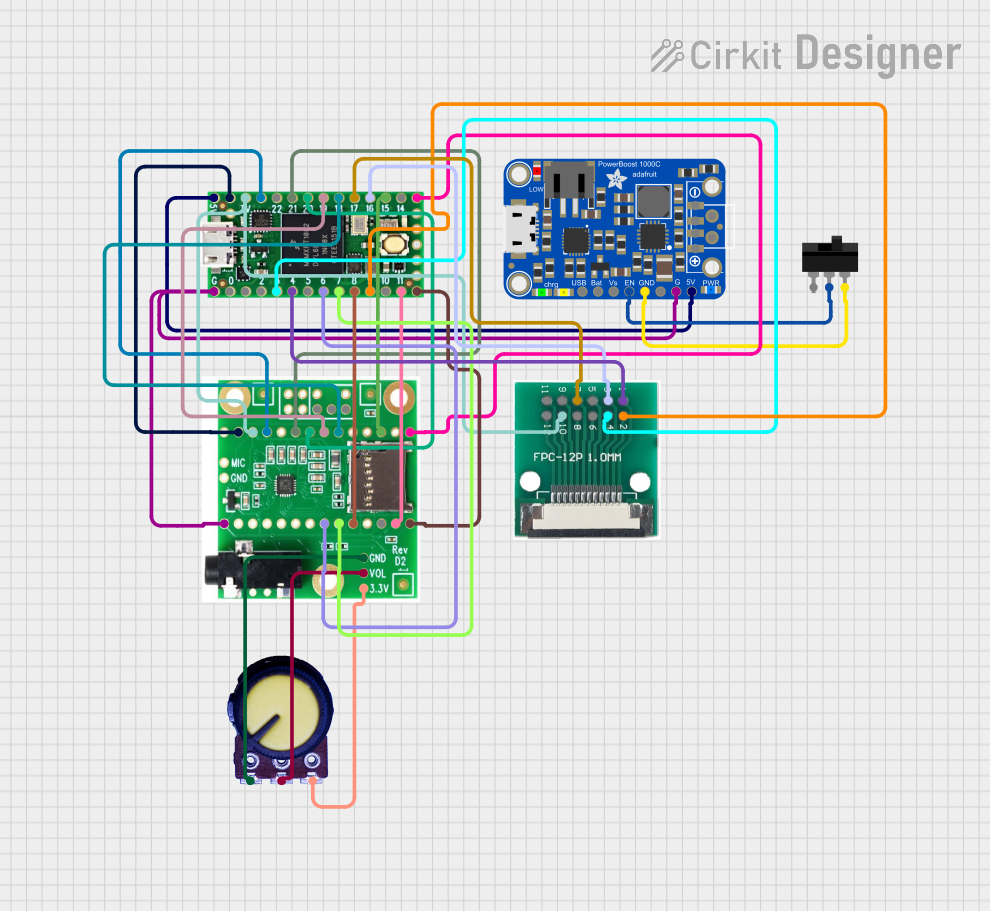
 Open Project in Cirkit Designer
Open Project in Cirkit Designer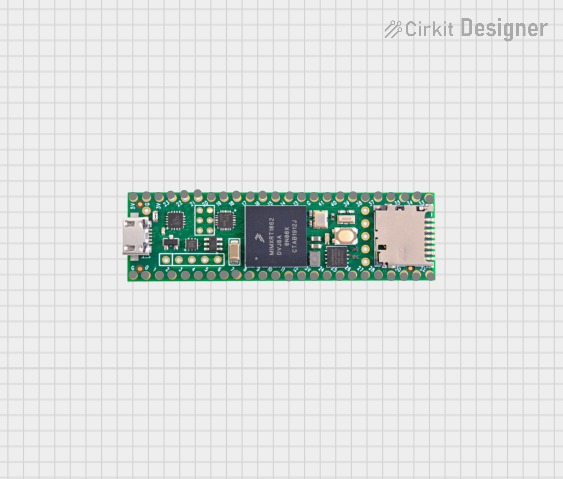
 Open Project in Cirkit Designer
Open Project in Cirkit Designer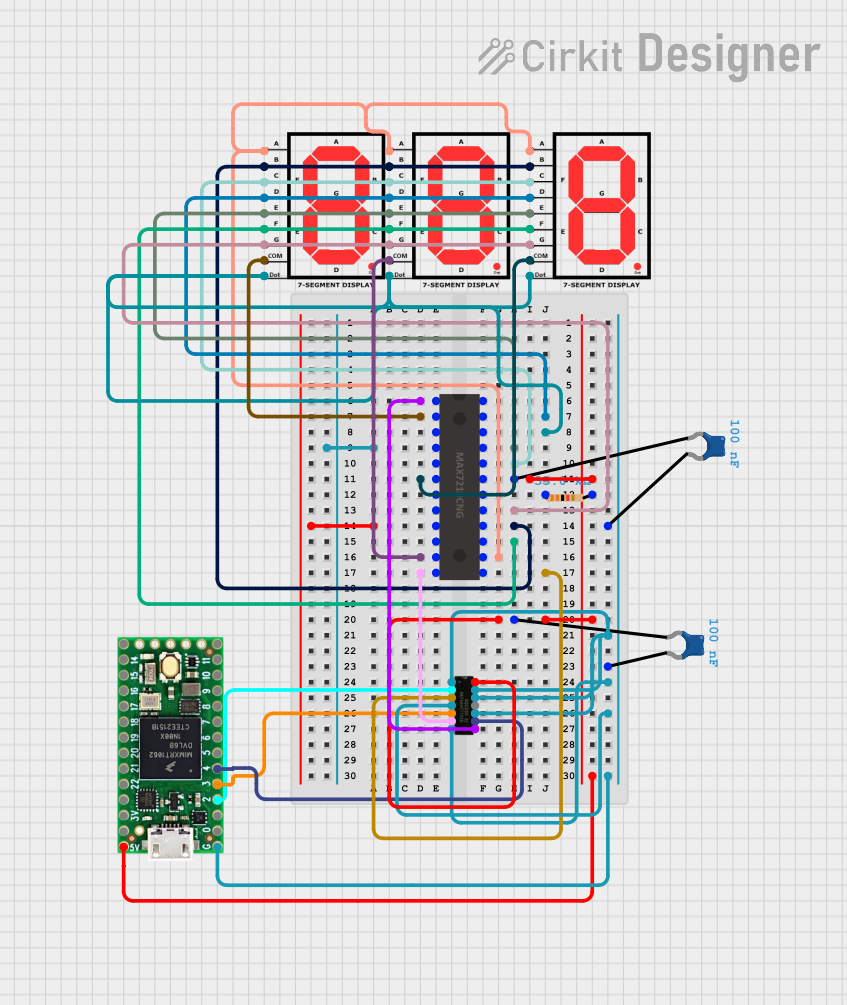
 Open Project in Cirkit Designer
Open Project in Cirkit DesignerExplore Projects Built with Teensy 4.0

 Open Project in Cirkit Designer
Open Project in Cirkit Designer
 Open Project in Cirkit Designer
Open Project in Cirkit Designer
 Open Project in Cirkit Designer
Open Project in Cirkit Designer
 Open Project in Cirkit Designer
Open Project in Cirkit DesignerCommon Applications and Use Cases
- Real-time audio synthesis and processing
- Robotics and motor control
- High-speed data acquisition and processing
- Machine learning and AI applications
- Advanced IoT devices
- Signal processing and scientific computing
Technical Specifications
Key Technical Details
- Processor: 600 MHz ARM Cortex-M7
- RAM: 1 MB
- Flash Memory: 2 MB
- Operating Voltage: 3.3V (logic level)
- Input Voltage: 5V via USB or external power
- Digital I/O Pins: 40 (all 3.3V logic)
- Analog Input Pins: 14 (12-bit ADC)
- PWM Pins: 31
- Communication Interfaces: UART, SPI, I2C, CAN, I2S
- USB: High-speed USB (480 Mbps)
- Dimensions: 1.4 x 0.7 inches (35.56 x 17.78 mm)
Pin Configuration and Descriptions
The Teensy 4.0 has a total of 48 pins, including digital, analog, and power pins. Below is a summary of the pin configuration:
| Pin | Type | Description |
|---|---|---|
| 0-33 | Digital I/O | General-purpose digital input/output pins. Many support PWM. |
| A0-A13 | Analog Input | 14 analog input pins with 12-bit resolution. |
| GND | Ground | Ground connection. |
| 3.3V | Power Output | 3.3V output for powering external components. |
| VIN | Power Input | Input voltage (5V) when powering the board externally. |
| USB | USB Data/Power | USB connection for programming, power, and communication. |
| RX/TX | UART | Serial communication pins (RX = receive, TX = transmit). |
| SCL/SDA | I2C | I2C communication pins (SCL = clock, SDA = data). |
| CAN | CAN Bus | Controller Area Network communication pins. |
| I2S | Audio Interface | Digital audio interface for real-time audio processing. |
| RESET | Reset | Resets the microcontroller. |
Usage Instructions
How to Use the Teensy 4.0 in a Circuit
Powering the Board:
- Connect the Teensy 4.0 to your computer via a USB cable for power and programming.
- Alternatively, supply 5V to the VIN pin for external power. Ensure the ground (GND) is connected.
Programming the Board:
- Install the Arduino IDE and the Teensyduino add-on.
- Select "Teensy 4.0" as the board in the Arduino IDE.
- Write your code and upload it to the board via USB.
Connecting Peripherals:
- Use the digital and analog pins for sensors, actuators, and other peripherals.
- Ensure all connected devices operate at 3.3V logic levels to avoid damage.
Using Communication Interfaces:
- Use UART, SPI, or I2C for communication with other devices.
- For audio projects, connect to the I2S pins for digital audio input/output.
Important Considerations and Best Practices
- Voltage Levels: The Teensy 4.0 operates at 3.3V logic. Avoid connecting 5V signals directly to the pins.
- Heat Management: The 600 MHz processor can generate heat during intensive tasks. Consider adding a heatsink for prolonged high-performance use.
- Pin Protection: Use resistors or level shifters when interfacing with higher voltage devices to protect the pins.
- Bootloader: The Teensy 4.0 has a built-in bootloader, so no external programmer is required.
Example Code for Arduino IDE
The following example demonstrates how to blink an LED connected to pin 13:
// Blink an LED on pin 13 using Teensy 4.0
void setup() {
pinMode(13, OUTPUT); // Set pin 13 as an output
}
void loop() {
digitalWrite(13, HIGH); // Turn the LED on
delay(500); // Wait for 500 milliseconds
digitalWrite(13, LOW); // Turn the LED off
delay(500); // Wait for 500 milliseconds
}
Troubleshooting and FAQs
Common Issues and Solutions
The board is not recognized by the computer:
- Ensure the USB cable is a data cable (not a charge-only cable).
- Check that the Teensyduino add-on is installed correctly.
- Press the reset button on the Teensy 4.0 to reinitialize the USB connection.
Code does not upload:
- Verify that "Teensy 4.0" is selected as the board in the Arduino IDE.
- Ensure no other program is using the USB port.
- Try pressing the reset button before uploading.
Peripherals are not working as expected:
- Double-check the wiring and connections.
- Ensure all devices operate at 3.3V logic levels.
- Use pull-up resistors for I2C communication if needed.
The board overheats:
- Avoid running the processor at maximum speed for extended periods without proper cooling.
- Reduce the clock speed in the Arduino IDE if heat becomes an issue.
FAQs
Can I use 5V sensors with the Teensy 4.0?
No, the Teensy 4.0 operates at 3.3V logic. Use a level shifter to interface with 5V sensors.What is the maximum current output of the 3.3V pin?
The 3.3V pin can supply up to 250 mA, depending on the USB power source.Can I use the Teensy 4.0 for audio projects?
Yes, the Teensy 4.0 is excellent for audio processing. Use the I2S interface for digital audio input/output.How do I reset the Teensy 4.0?
Press the reset button on the board to restart the microcontroller.
This documentation provides a comprehensive guide to using the Teensy 4.0 effectively in your projects. For more advanced features and libraries, refer to the official Teensy website and forums.